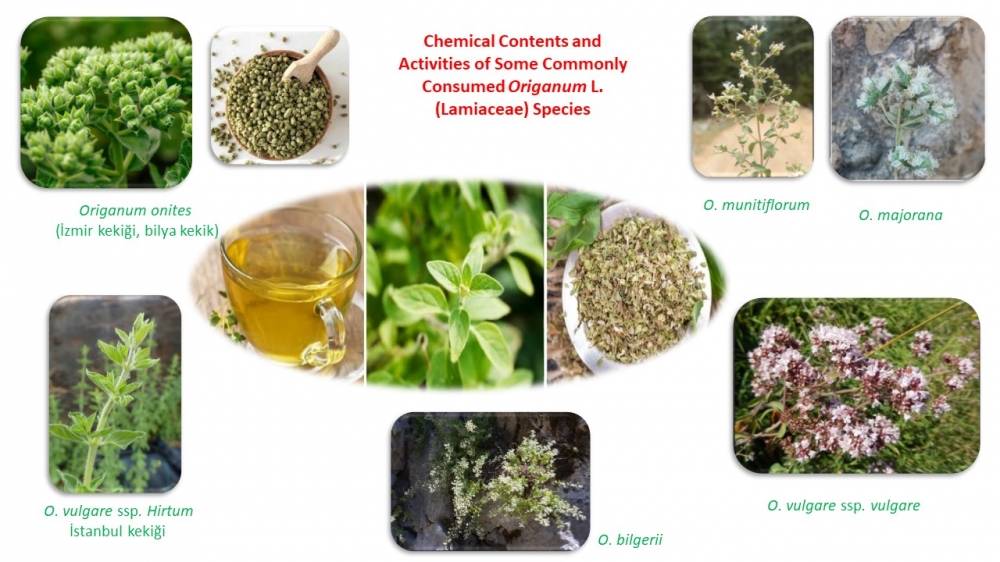JOURNAL 3133
Records of Agricultural and Food Chemistry
Year: 2024 Issue: 3 Special Issue: Abstracts 3rd. TCS, International Food Chemistry Congress February 29-March 03,2024 Antalya Türkiye
p.44 - 44
Viewed 1100 times.
GRAPHICAL ABSTRACT

ABSTRACT
The genus Origanum L. is a well-known genus of the Lamiaceae, and species of this genus are used as spices or herbal teas around the world. The genus contains 42 species and is mainly distributed in the Mediterranean, Euro-Siberian and Iranian-Siberian regions. [1]. Turkey is an important genetic centre of diversity of the genus, which comprises 21 species with three subspecies (24 taxa) and 13 hybrids, of which 25 are endemic [2]. In Turkey, Origanum, Satureja, Thymbra, Thymus, and Coridothymus species, belonging to the Lamiaceae family, are known as thyme “kekik”. Among these species, Origanum is the most widely cultivated and traded species and is commonly used as thyme, especially Origanum onites (İzmir kekiği, bilya kekik), O. vulgare (Istanbul kekiği) and O. majorana [3]. This study aimed to investigate the biological activity and chemical content of the most used Origanum species O. onites, O. vulgare ssp vulgare, O. vulgare ssp. hirtum, O. vulgare ssp. viride, O. majorana, O. syriacum, O. bilgerii, O. munitiflorum by scanning publications (PubMed/Web of Science/Scopus, 20.2.2021). These different reported activities showed that Origanum species are important medicinal plants and herbal treatments for several therapeutic indications.
KEYWORDS- Origanum
- activity
- secondary metabolites
- phenolics
- essential oil